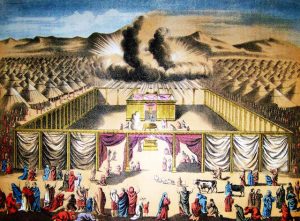The verse you are referring to, discussing a fight between two Jews, says the following: “…an eye for an eye, a tooth for a tooth, a hand for a hand, a foot for a foot; a burn for a burn, a wound for a wound, a bruise for a bruise” (See Exodus 21:24, Leviticus 24:20, Deut. 19:21).
This verse, taken literally, truly sounds like one must be punished in the way you said, to take out the eye or the tooth, to chop off the hand, etc., which would indeed be exceedingly barbaric. I, however, take strong issue with the assumption of the speaker that this verse was ever taken literally. There is no evidence anywhere, literary or archaeologically, that a literal “eye for an eye” was Jewish practice at any time in our history. Nor is there the slightest hint in the Talmud, the principal body of Jewish law that this verse was ever taken literally. It is simply an erroneous assumption based on the (mistaken) literal reading of the verse.
The Talmud, in fact, records a lengthy discussion of this verse. The Talmudic sages bring a number of compelling proofs, both logically and from the inference of other verses, showing one should not even entertain the thought that “an eye for an eye” is to be taken literally. Maimonides, the renowned 12th century sage, further cites verses, which openly speak of damages in terms of monetary payment. Hence, a few verses later when the Torah speaks of “an eye for an eye…” it is obviously referring to the same method of monetary remuneration for the physical damage caused. Other early sages cite additional insight why it was clear to the Talmudic sages that this verse is not to be taken literally. If the verse in fact meant to take out one’s eye for the other’s, if the perpetrator injures another and minimizes his sight by one third or half, how would it ever be possible to exact equal punishment by minimizing the perpetrator’s sight by a similar one third or half, no more and no less? The point is that the Torah cannot be understood literally. Only with the Oral Tradition transmitted at Sinai together with the Written Law, can the Torah be understood correctly and accurately. We have discussed this at length in previous columns. Our discussion is a prime example; since the transmission of Torah at Sinai it has been clear in the Oral Tradition that this verse is not to be taken literally.
One big question remains: If the Torah indeed intended that one pay monetary damages, why is the verse written in a way which can be so misleading? The answer offered by Maimonides and Maharal is that the Torah is teaching a heightened sense of responsibility for one’s actions. The Torah, by expressing the payment in this way, is teaching an important lesson, as follows: Had the Torah simply ordered the aggressor to pay damages, one might have thought that it is sufficient to simply write a check to the victim. With that monetary payment he will have fulfilled his obligation; he is done. The Torah, however, by expressing the restitution in the way which it does (an eye for an eye) is teaching a lesson: if one causes a loss of limb to his fellow, he truly deserves to have the same done to himself. He should contemplate the profound damage he has brought to the quality of life of his fellow, the pain and suffering he is forced to endure for the rest of his life. He has done a terrible thing, and the slate will not be cleared by monetary payment alone. He must beg for forgiveness from the injured party and perform Teshuva, repentance to G-d, making serious life changes that will ensure a similar act will not be repeated. With proper interpretation and understanding of the Oral Tradition, profound lessons can be gleaned from the subtle nuances and expressions of our holy Torah.
Sincerely,
Rabbi Yerachmiel Fried

